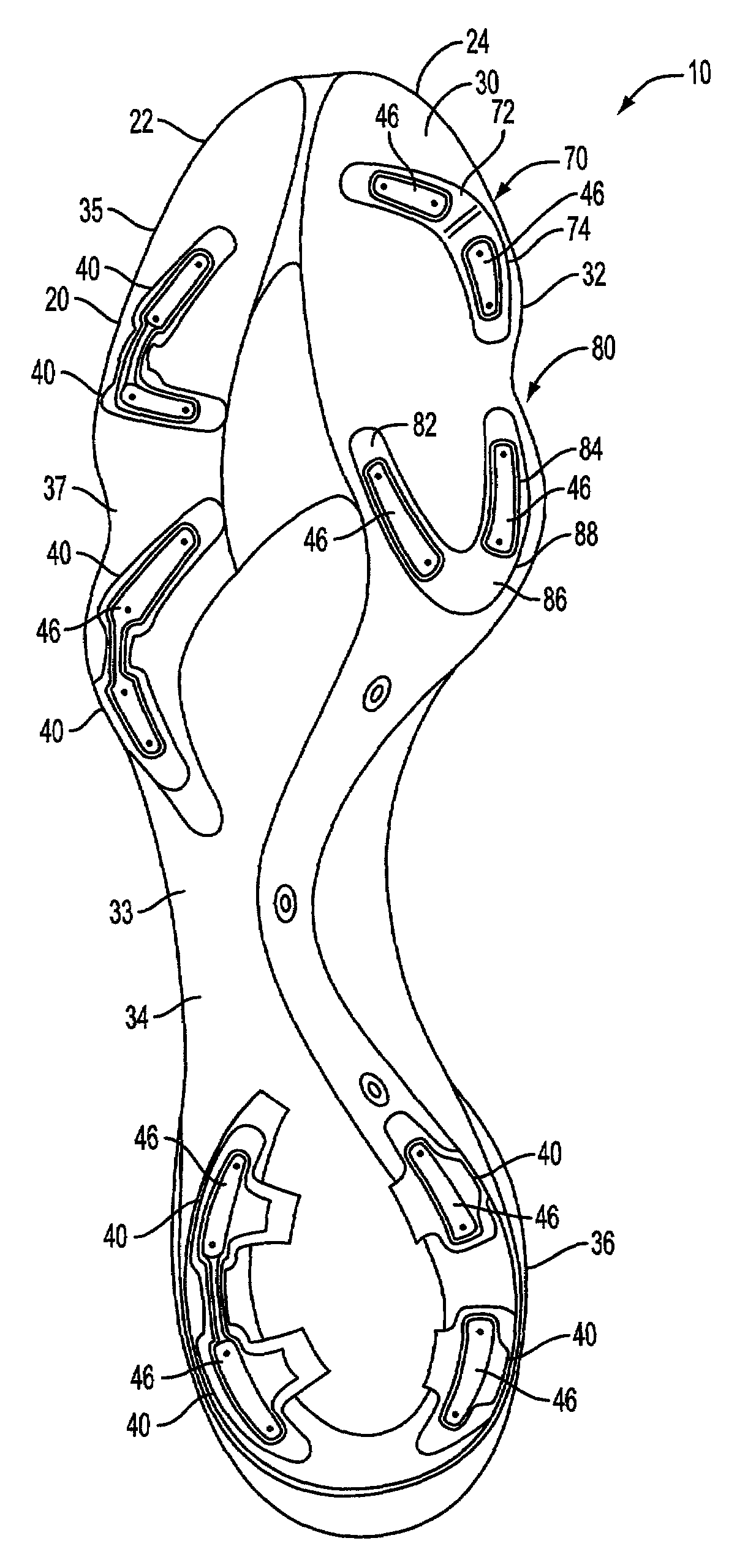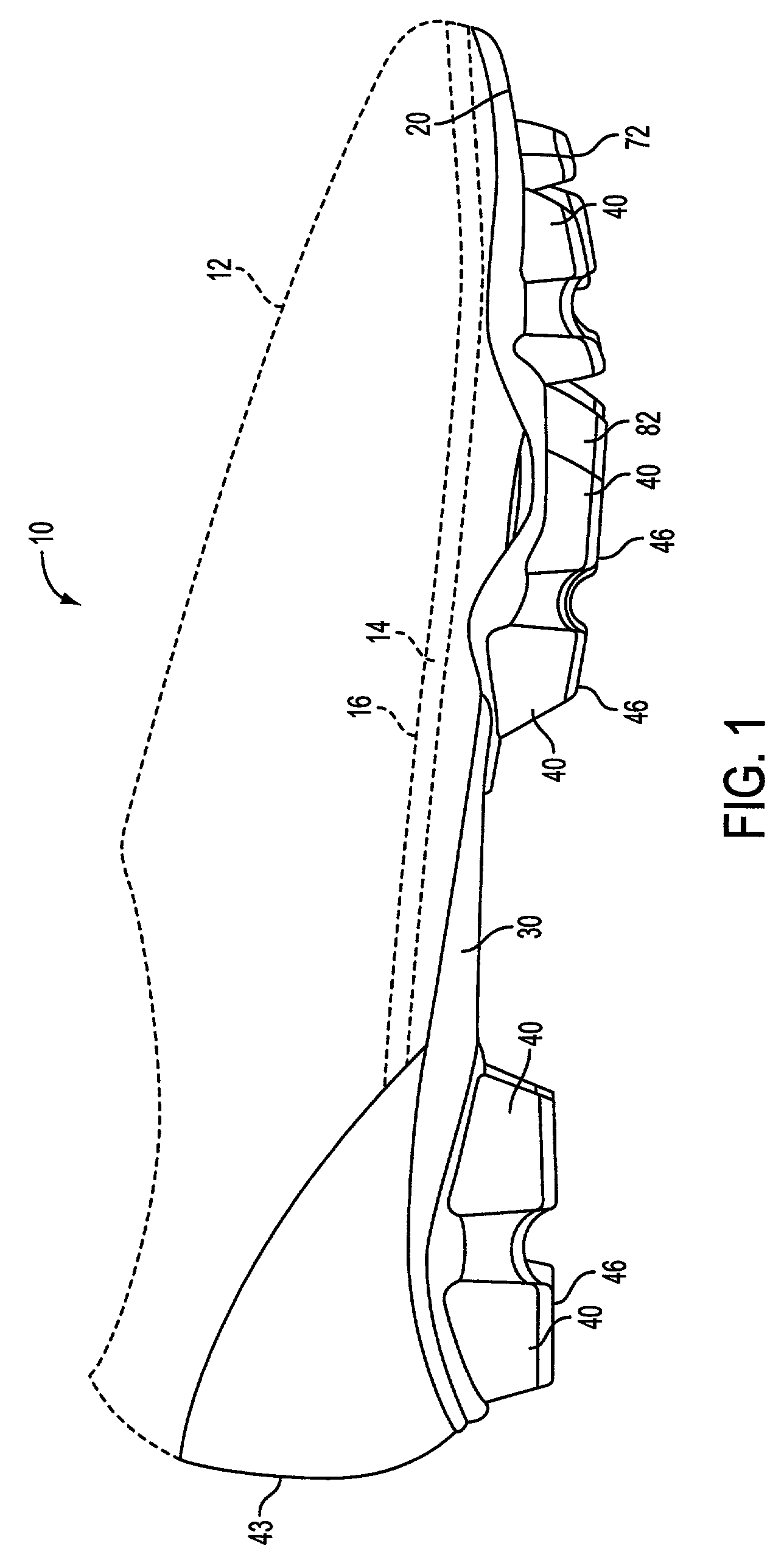Article of footwear having a regional cleat configuration
a technology of regional cleats and footwear, applied in the direction of fastenings, uppers, bootlegs, etc., can solve the problems of increasing the impact force acting on the foot at the discrete cleat, relatively high ground impact force, and design that does not address the demands and requirements of sport, so as to enhance the toe off performance of the shoe of the wearer, enhance flexibility, enhance flexibility, and enhance flexibility
- Summary
- Abstract
- Description
- Claims
- Application Information
AI Technical Summary
Benefits of technology
Problems solved by technology
Method used
Image
Examples
Embodiment Construction
[0018]FIGS. 1–7 illustrate an embodiment of a cleated article of footwear, for example a soccer shoe. The article of footwear is generally referred to herein as a shoe 10. Shoe 10 includes an upper c12 that is attached to a sole 20 having a plurality of downwardly extending ground engaging members 40, 72, 74, 82, 84. In use, the ground engaging members generally penetrate downwardly into the underlying ground surface, such as grass, soil, or artificial turf. Shoe 10 may be preferably used to enhance performance in, and prevent injuries associated with, the sport of soccer. Referring to FIGS. 3 and 4, shoe 10 has a forefoot enhancing performance, in which the sole 20 includes a toe off structure 70 for improving traction control to increase the forward propulsion of the athlete. Additionally, sole 20 includes a metatarsal head cradle 80 for the first metatarsal bone of a foot of a wearer to reduce injury and stud pressure. Ground engaging members 82, 84 form part of the metatarsal he...
PUM
 Login to View More
Login to View More Abstract
Description
Claims
Application Information
 Login to View More
Login to View More - R&D
- Intellectual Property
- Life Sciences
- Materials
- Tech Scout
- Unparalleled Data Quality
- Higher Quality Content
- 60% Fewer Hallucinations
Browse by: Latest US Patents, China's latest patents, Technical Efficacy Thesaurus, Application Domain, Technology Topic, Popular Technical Reports.
© 2025 PatSnap. All rights reserved.Legal|Privacy policy|Modern Slavery Act Transparency Statement|Sitemap|About US| Contact US: help@patsnap.com



